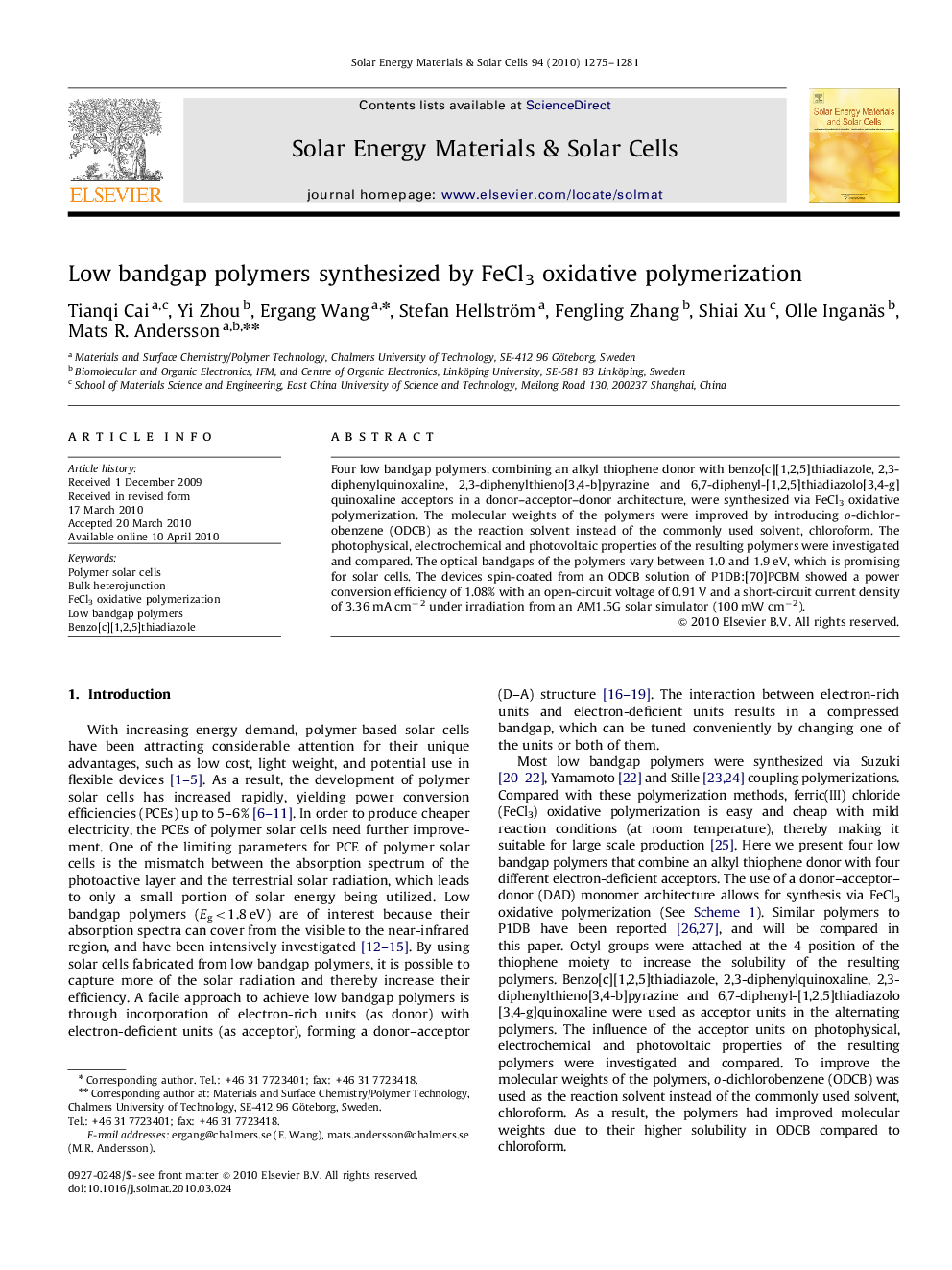| Article ID | Journal | Published Year | Pages | File Type |
|---|---|---|---|---|
| 79452 | Solar Energy Materials and Solar Cells | 2010 | 7 Pages |
Four low bandgap polymers, combining an alkyl thiophene donor with benzo[c][1,2,5]thiadiazole, 2,3-diphenylquinoxaline, 2,3-diphenylthieno[3,4-b]pyrazine and 6,7-diphenyl-[1,2,5]thiadiazolo[3,4-g]quinoxaline acceptors in a donor–acceptor–donor architecture, were synthesized via FeCl3 oxidative polymerization. The molecular weights of the polymers were improved by introducing o-dichlorobenzene (ODCB) as the reaction solvent instead of the commonly used solvent, chloroform. The photophysical, electrochemical and photovoltaic properties of the resulting polymers were investigated and compared. The optical bandgaps of the polymers vary between 1.0 and 1.9 eV, which is promising for solar cells. The devices spin-coated from an ODCB solution of P1DB:[70]PCBM showed a power conversion efficiency of 1.08% with an open-circuit voltage of 0.91 V and a short-circuit current density of 3.36 mA cm−2 under irradiation from an AM1.5G solar simulator (100 mW cm−2).
